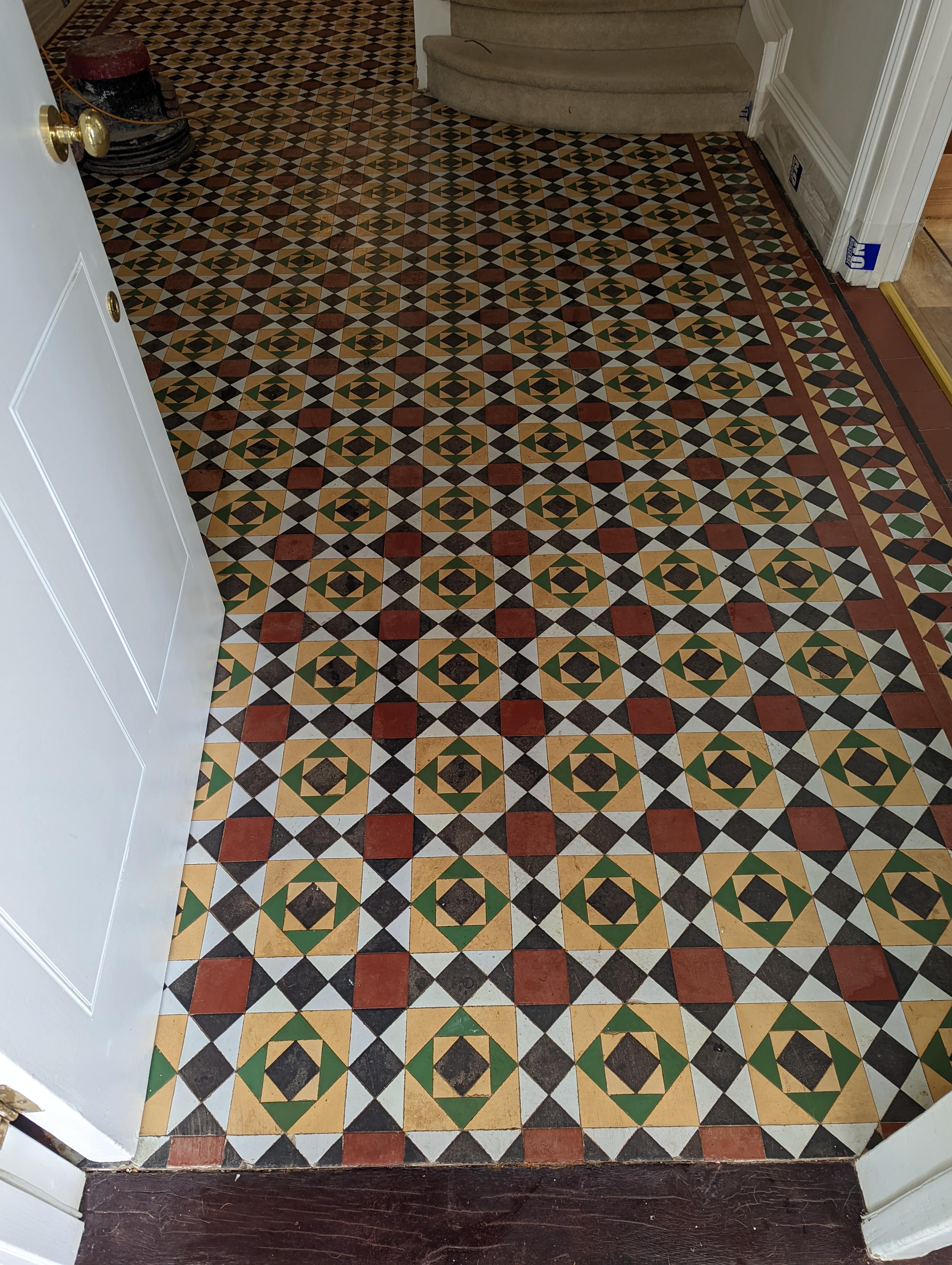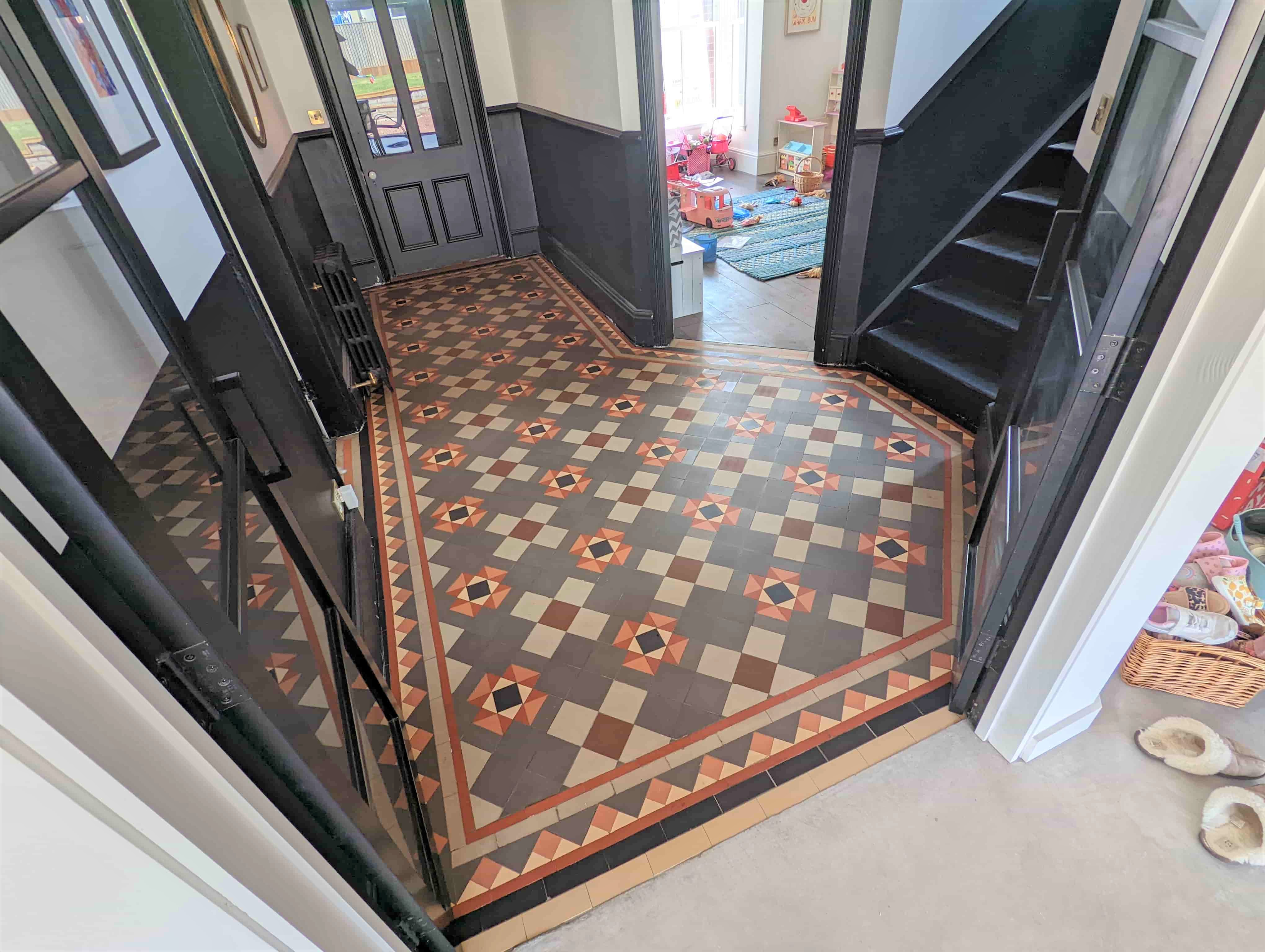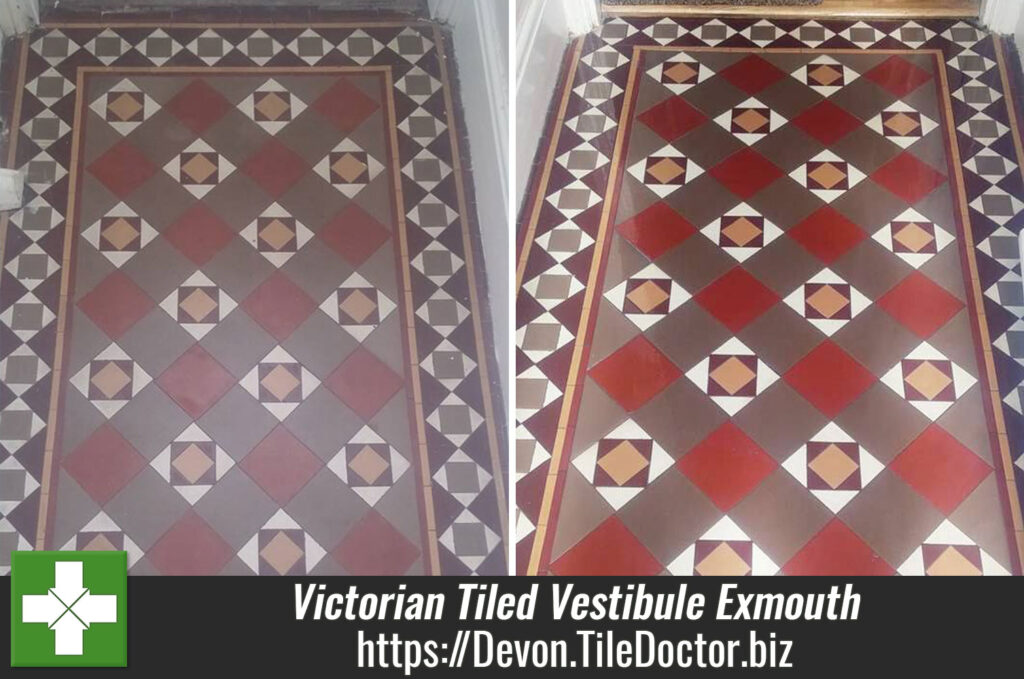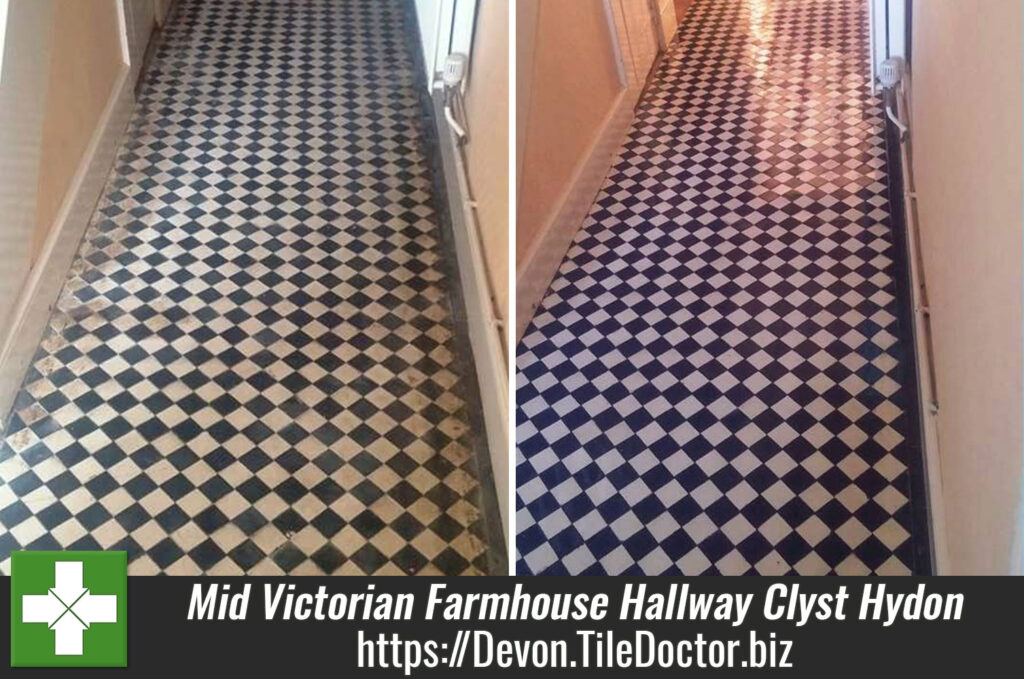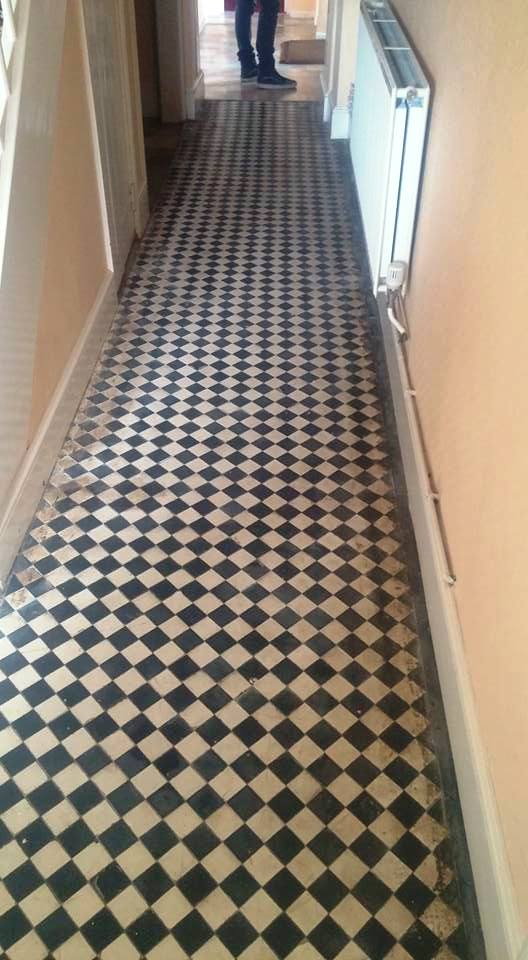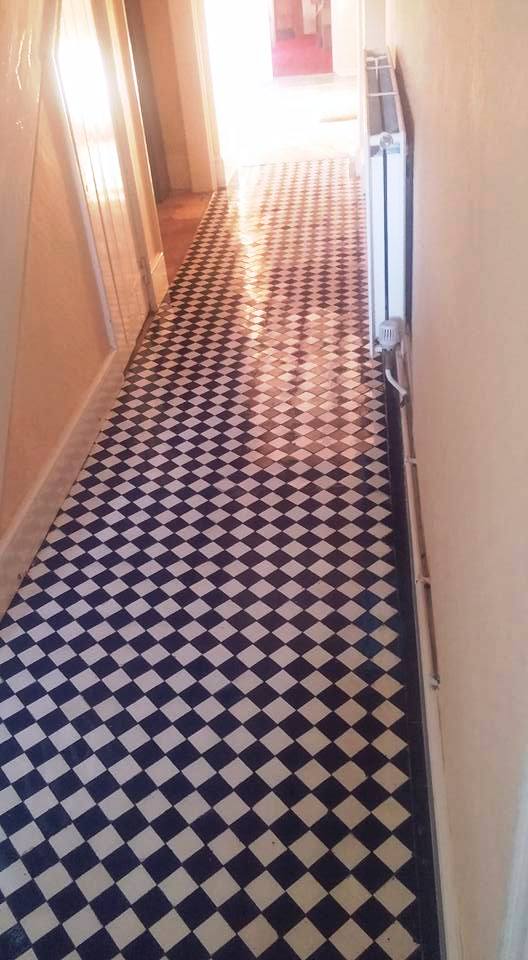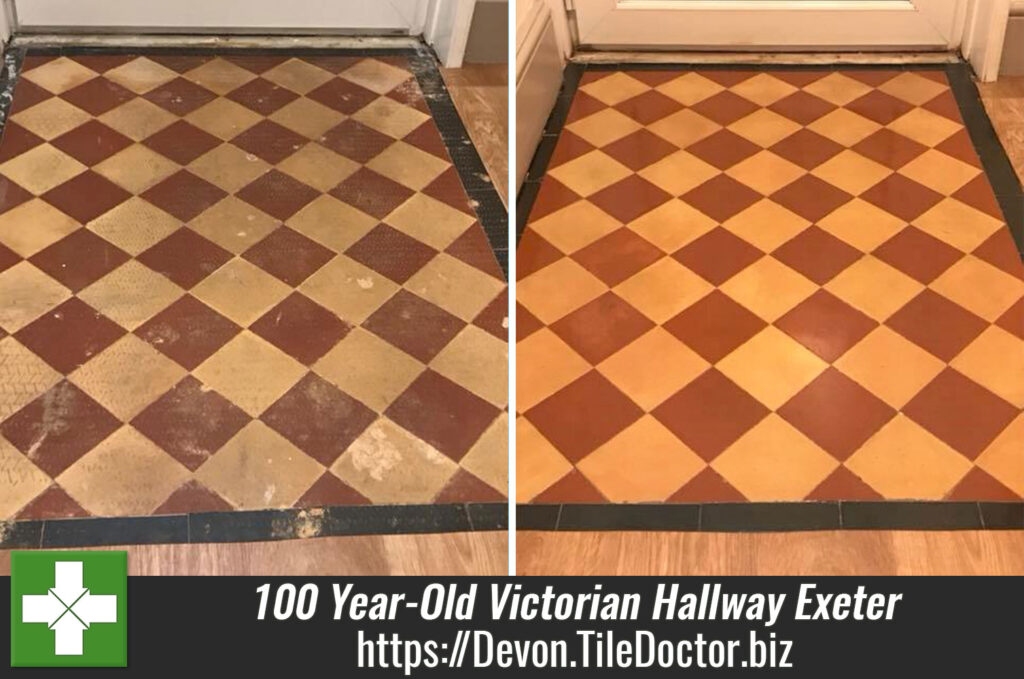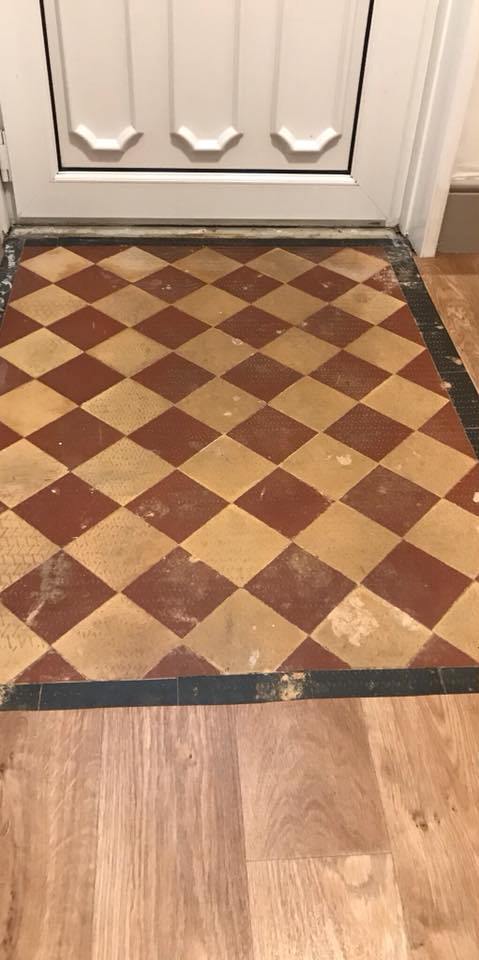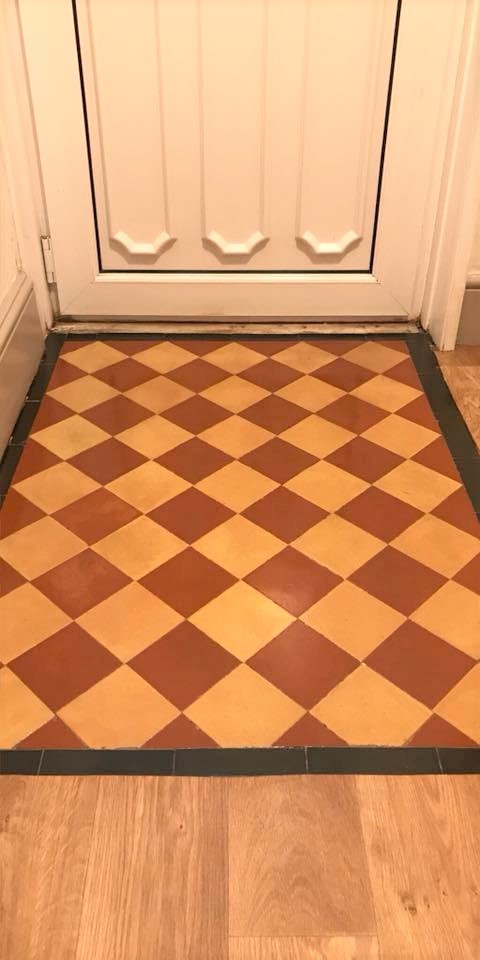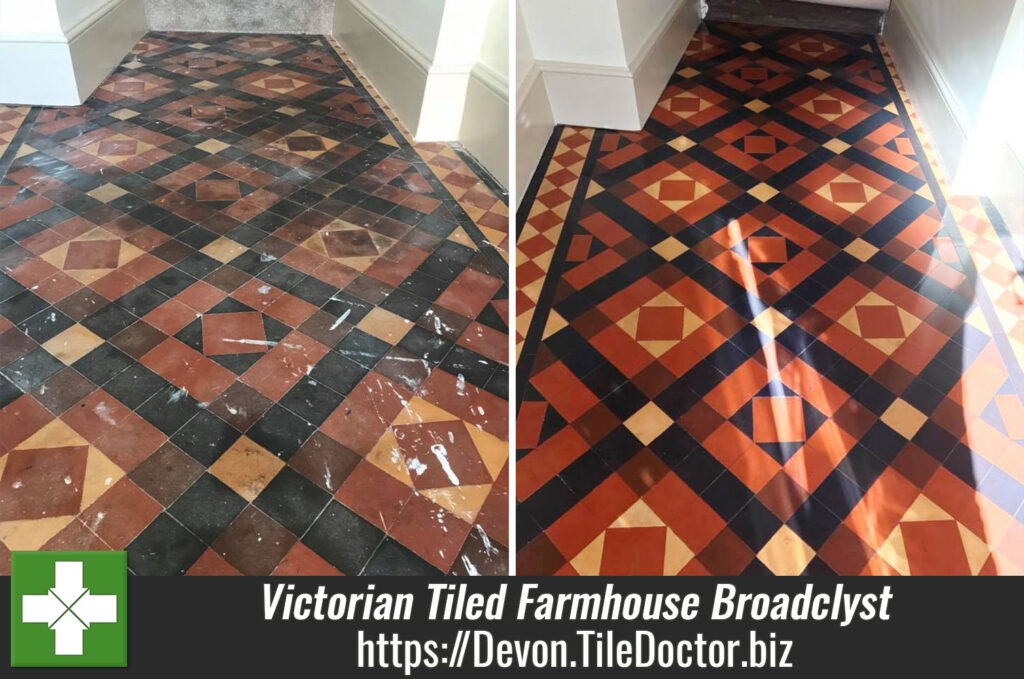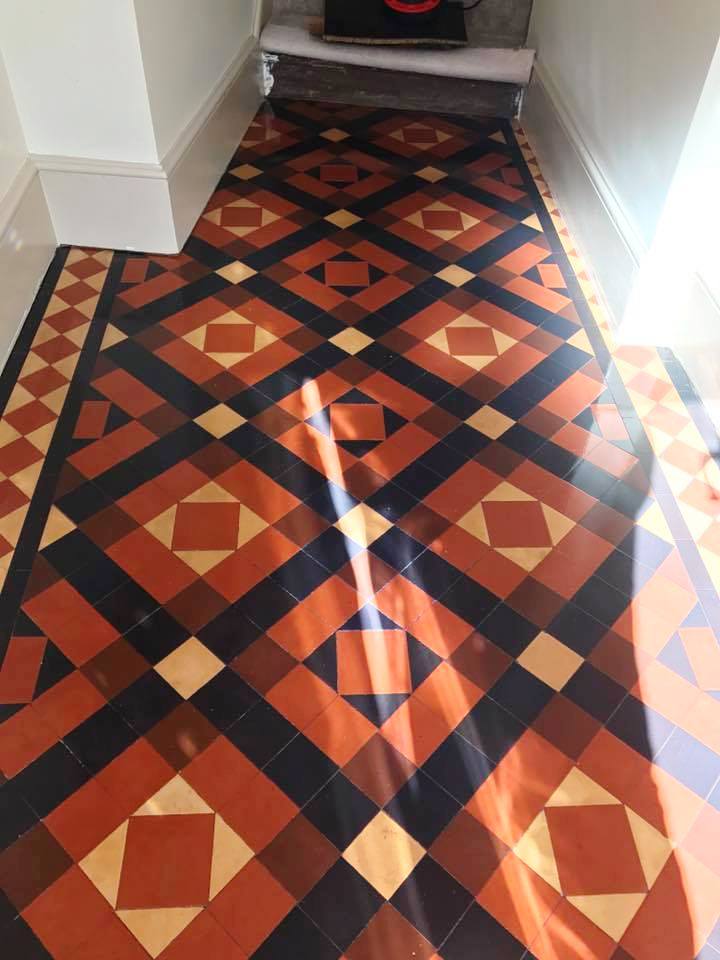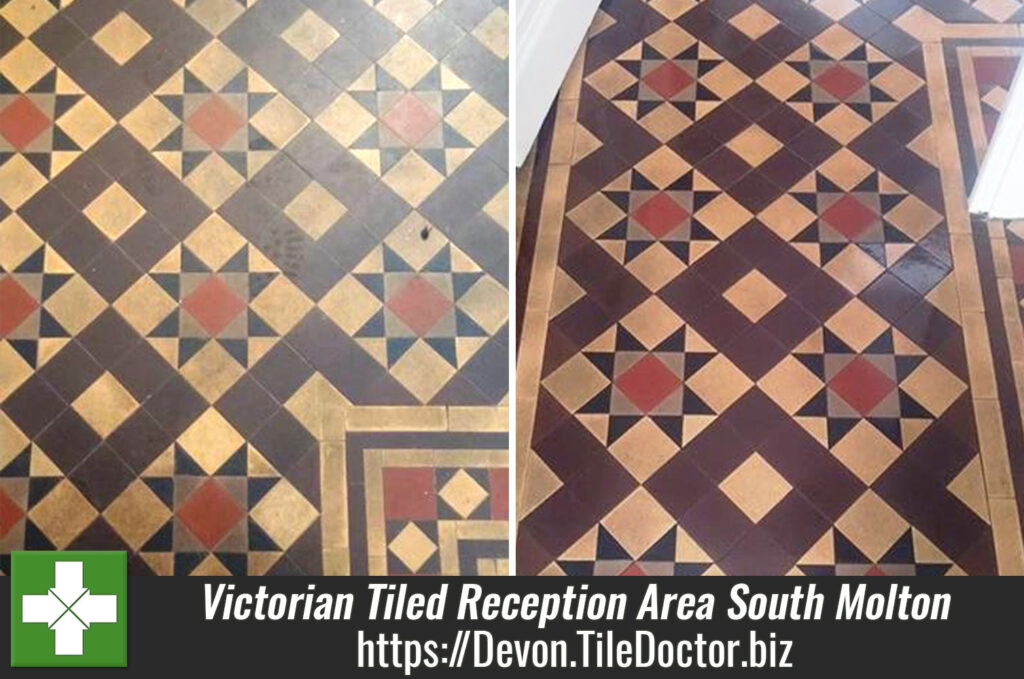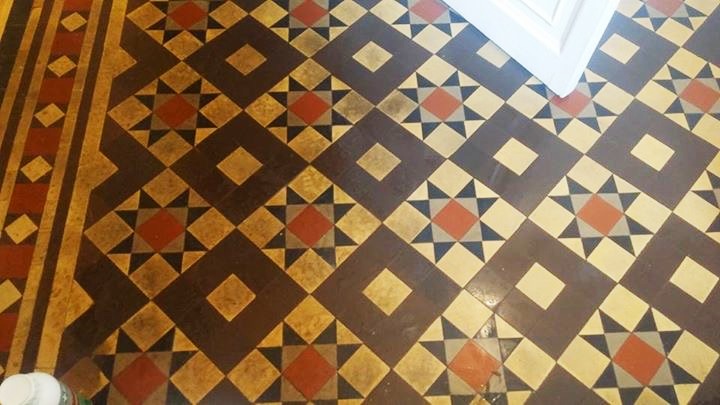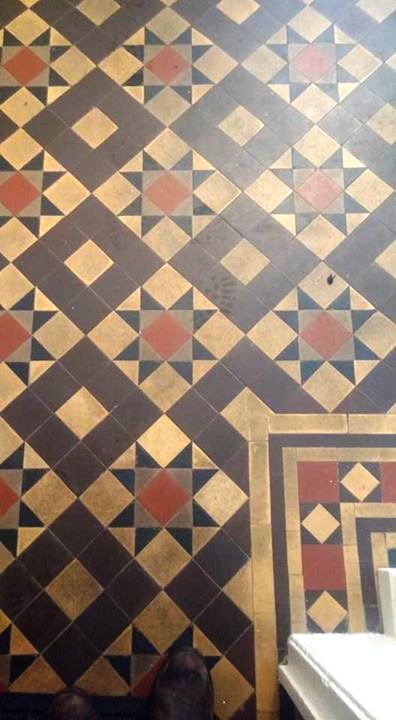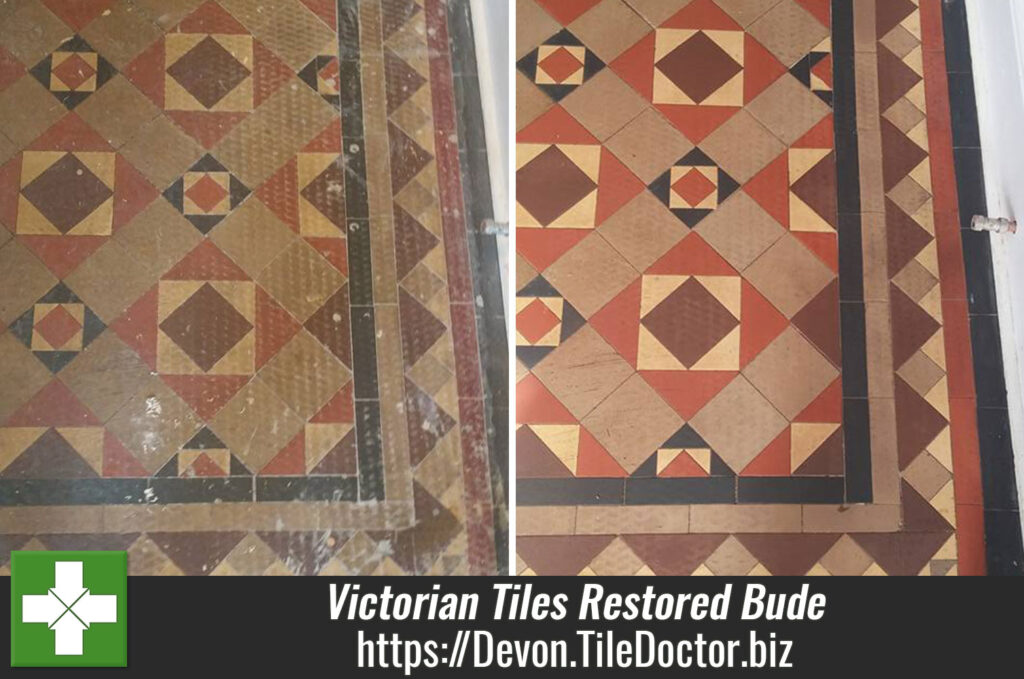Damaged Victorian Path Restored in Kingsbridge Devon
I received an enquiry from a client in Kingsbridge who wanted to have their Victorian tiled path surveyed to see if it was beyond repair or not. The water board had previously been out to fix a water leak and subsequently removed part of this path in a rudimentary manor leaving it in a state afterwards. This combined with years of wear and dirt build-up meant the path was in a bit of a state to say the least.
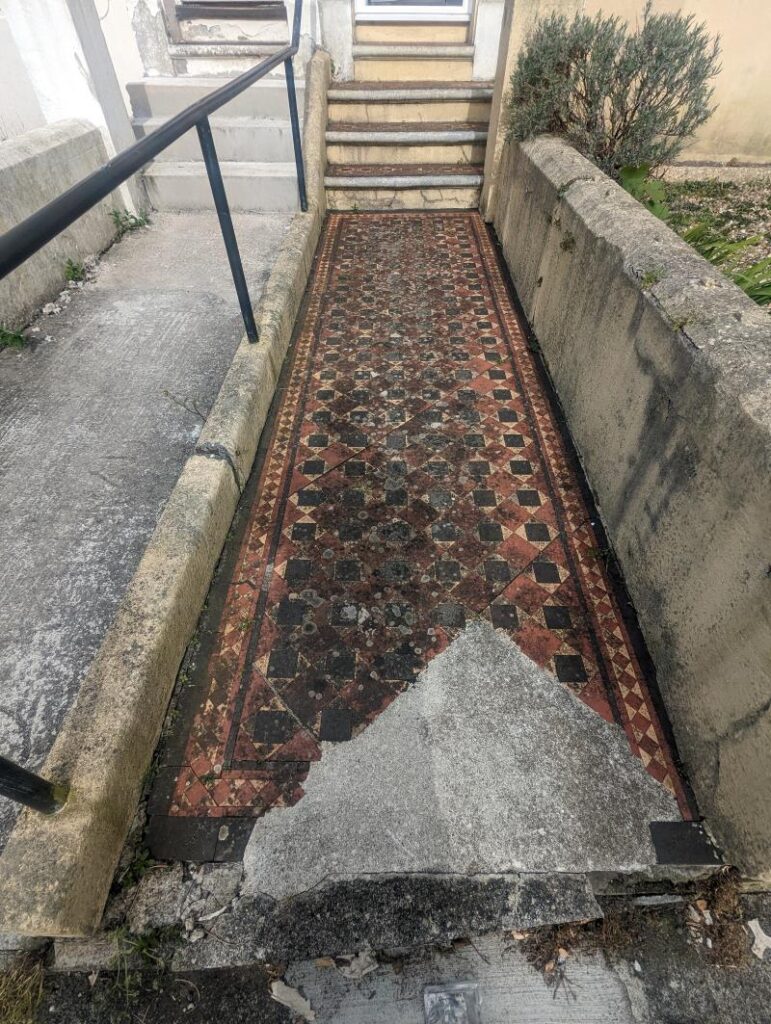
I visited the property to survey the path, advise on its restoration and provide a quote for completing the work. I was able to confirm that path could indeed be restored and provided a quote which they accepted and a date booked in for the work to start.
Repairing a Victorian Tiled Path in Kingsbridge
I began the repair work by carefully removing all the concrete which had been used to fill the void back in after the water board had fixed the leak. This all went well with the exception that in doing so part of the front step came away as well which added to the repair list but all was fine.
After building up the replacement sub-floor foundation, a self-levelling screed was added on top to provide a level surface on which to tile onto. Luckily a section of the original path was still available so I decided to use a good section of that to puzzle it back together. Spaces were left that would be tiled afterwards with reproduction tiles individually cut to size. Luckily these are quite readily available.
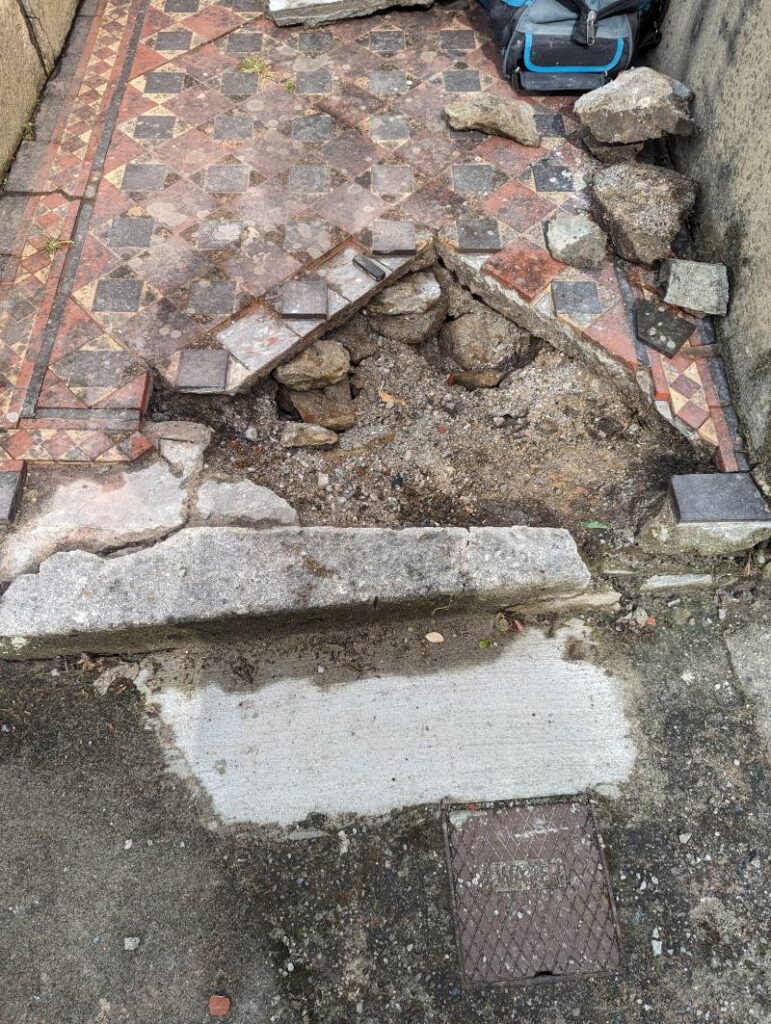 |
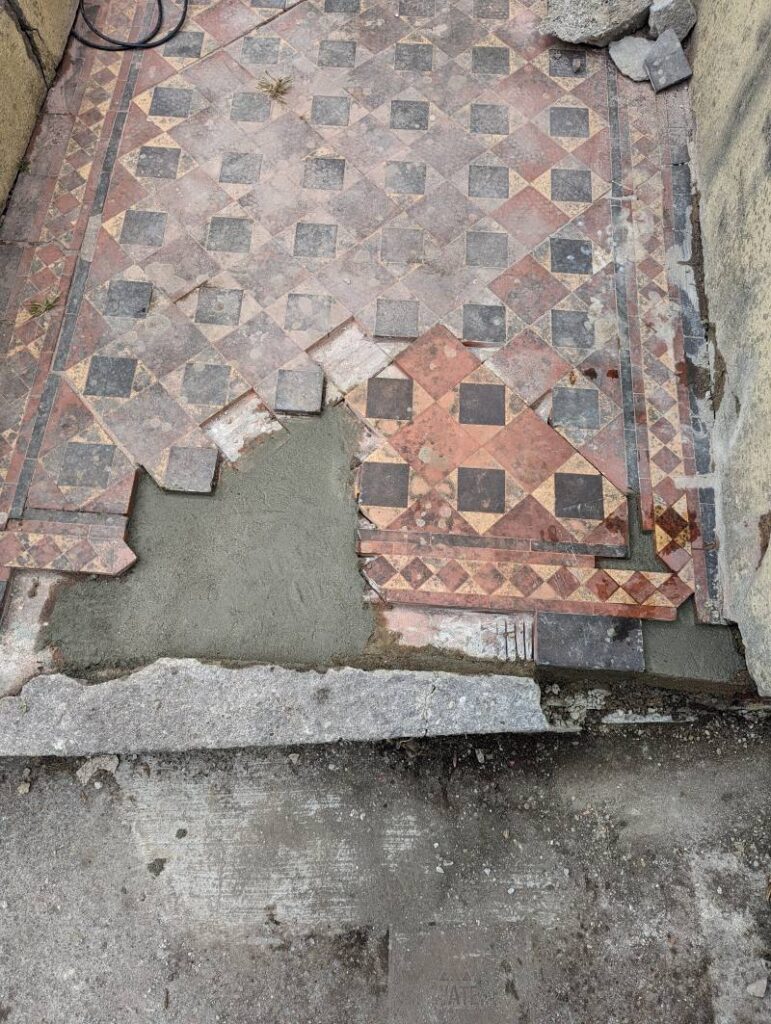 |
After the tiling and step re-build was complete, I moved onto to deep cleaning the rest of the path.
Deep Cleaning a Victorian Tiled Path in Kingsbridge
To clean the path, I began with the application of a strong dilution of Tile Doctor Patio Cleaner which I continued to top up and let soak in for about half a day. The longer you leave this product the better it works. It’s a strong product containing Sodium Hypochlorite which kills bacteria and mould so you have to be careful.
After this I ran a set of Tile Doctor Diamond Pads fitted to a weighted rotary machine over the tiles. I worked through different grits from 50 up to 1500 grit to ensure the pores were sufficiently closed and ready for sealing.
Prior to sealing, this patio had now seen a lot of moisture and although it was summer and drying off nicely with no signs of efflorescence, I gave it a generous acid wash nonetheless – using Tile Doctor Acid Gel, this is also good for pre-sealing.
Sealing a Victorian Tiled Path in Kingsbridge
Once the path had dried sufficiently two coats of Tile Doctor X-Tra Seal were applied to seal the tiles and protect them from ingrained dirt. This product is a fully breathable, colour intensifying sealer which really brought the colours in the tile back to life. It’s rated for external as well as internal use and so was a perfect choice for this situation.
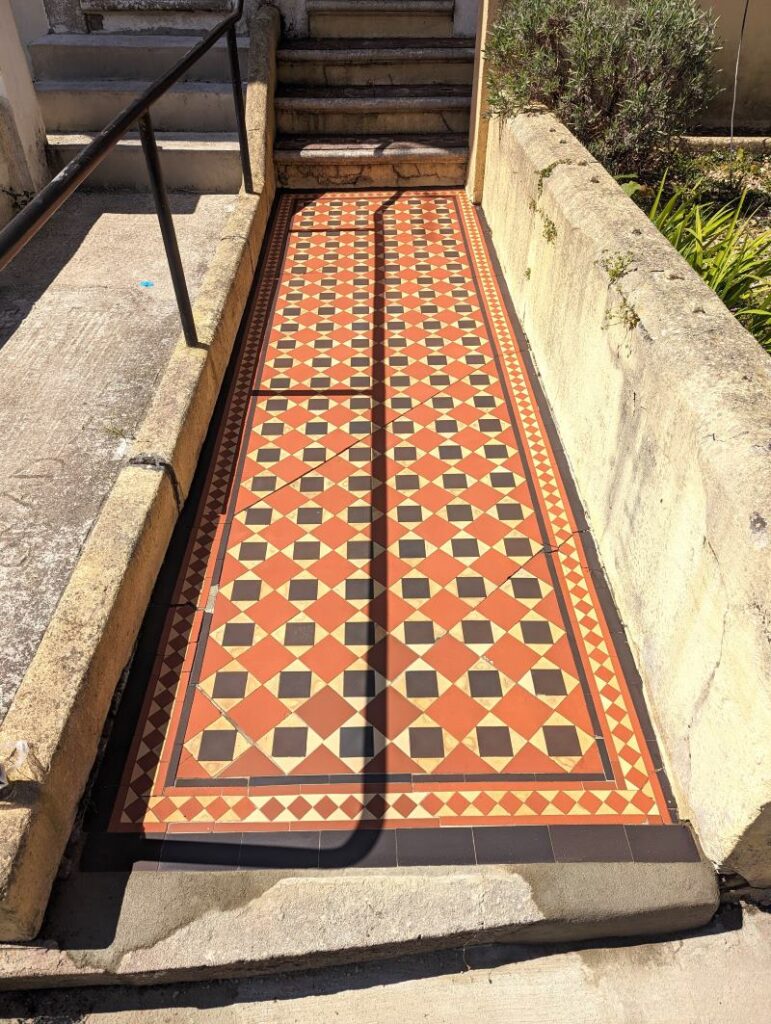
The client was thrilled with the results and has since had me back to complete further works.
Professional Restoration of a Victorian Tiled Path in Devon
Damaged Victorian Path Restored in Kingsbridge Devon Read More »









